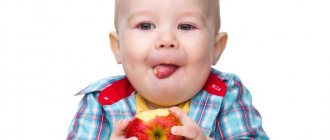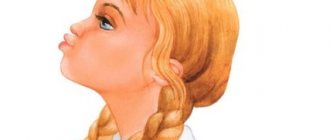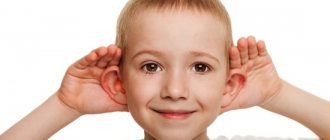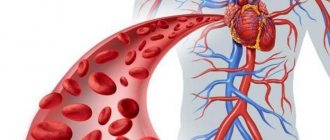Speech is divided into expressive (active) and impressive (passive). Normally, children master two types of it; it is the understanding of oral or written speech that is the passive form and precedes the emergence of active communication.
For example, with deafness it is present and is based on receiving information using the organ of vision. Blind people acquire written receptive language through tactile sensations. Impressive speech in children can be oral and written.
Speech activity consists of the perception of the sound composition of a word, its grammatical form, understanding of intonation and other means of language. It begins with the difference between someone else's and your own speech. This process occurs with the help of phonemic hearing. It is important to be able to distinguish between sounds, both hard and soft; apart from others and with continuous pronunciation. The formation of phonemic hearing ends completely at 4.5-5.5 years. Otherwise, we are talking about developmental delay.
Etiology and nature of deviation
The concepts of perception and understanding of speech are closely related. In the first case, this means how a person hears and reproduces individual sounds. However, he may not understand the meaning of what was said. For example, after reading an incomprehensible phrase, you will perceive it partially, and after clarifying the meaning of individual words, understanding will come. That is, in speech, perception through hearing or vision is primary.
Causes of impaired impressive speech:
- inversion (rearrangement of subjects and predicates in a sentence);
- inability to change the forms of words;
- failure to recognize speech sounds.
How speech understanding occurs at different periods of life can be seen from the table below.
| Skills and abilities | Child's age |
| The child is already responding to the voice of the parents | 1-1.5 months |
| Active reaction when addressed by adults (smile, waving arms, legs) | 3 months |
| Recognizes changes in intonation and responds accordingly | 4 months |
| When you contact him, there is a response hum | 5 months |
| Finds out his name | 6 months |
| Accepts requests accompanied by gestures | 7 months |
| Knows the names of the parts of the face | 7.5 months |
| Understands requests without reinforcement with gestures | 8.5 months |
| Can find already known objects in the room | 9-10 months |
| Begins to navigate using simple pictures in a book | 10-11 months |
| Knows the meaning of the word “cannot” | 11 months |
| Understands phrases like: “come”, “let’s go eat.” Can show at least two colors. | 1 year |
| Answers questions in picture books | 2 years |
| Accepts short stories and fairy tales. The baby can understand the characteristics of familiar objects, the meaning of the words hurt, loud, etc. | 2 years 5 months |
| Get to know antonyms | 3 g |
| Maintains dialogue by answering questions | 3 years 5 months |
| Perceives speech in a generally accepted form, phrases with 10 or more words | 4 years 5-6 months |
| Can answer questions: what is friendship or fear, joy | 5-6 years |
Another sign of speech perception in speech therapy is orientation in a fast paced conversation and analysis of information. Pauses help with this, but at a fast pace new words can be formed due to the merging of phonemes. In written speech, an important point is the relationship between words and the change in their forms in phrases. If the case is incorrect, it is impossible to understand the meaning of the phrase. An oral means of impressive speech is intonation. Naturally, sentences with homogeneous members and participial phrases are more difficult to perceive.
Advice to parents: while the child’s passive speech is not fully formed, use short and understandable phrases of 7-8 words for communication. Prohibitions or praise should also be concise.
Psychological diagnostics of preschool children with expressive speech delay
Comprehensive studies help to exclude deafness and the level of speech development; diagnosis of conditions that require additional therapeutic measures is needed.
Such defects include autism, mental retardation, hyperactivity, depressive, anxious or other mental disorders. The following methods help determine the severity of the problem:
- demonstration of objects with the desire to say their name;
- conducting a dialogue with a transition from easy topics to more complex ones to assess pronunciation, vocabulary and its quality;
- asking you to tell what action the picture depicts - the ability to compose sentences of varying complexity is revealed;
- assessment of the pronunciation of sound groups bpm, ztss, chshschch, gkh;
- checking understanding of instructions, graded from simple to complex: touch your nose, point with a pencil at the open window.
Typically, expressive language disorder in children becomes noticeable when the vocabulary and mode of communication are not age-appropriate.
Considering that defects are more amenable to correction in the initial stages, independent attempts to correct the problem can be harmful.
An informative indicator of good development is the finger pointing gesture; if it does not appear by 1.5 years, you should be examined by a pediatric neurologist.
Consequences of the disorder
Impressive speech goes through several stages in its development: from perceiving someone else’s speech to composing one’s own statements. To understand phrases, you need to know the grammatical basis of the word and its meaning.
Stages of development of receptive speech:
- I – understanding the intonation of adults;
- II – assessment of the situation in repeated conditions;
- III – the child names objects, events and actions;
- IV – final, in which the baby fulfills the requests of adults.
Receptive speech disorders cause a delay in the development of expressive speech. General underdevelopment of speech (GSD) leads to phonemic and grammatical problems and poor vocabulary. There is also a decrease in intelligence and weakness of character. Against the background of pathological processes, muscle tone weakens, static coordination and endurance deteriorate. Preschool children are characterized by clumsiness, clumsiness, lack of facial expressions, and poor coordination of movements.
The patient is unable to distinguish sounds, resulting in speech that is crumpled and inarticulate. For mild disorders, it is possible to replace sounds with similar ones, which is called literal paraphasia. They check this by quickly reading it out loud, this significantly increases the number of reservations. In the case of a severe course, a person is generally unable to understand what is being said to him.
In the course of his research, V.P. Glukhov revealed inertia, rapid depletion of combinatorial functions, and poor spatial imagination in children with ODD. When involved in the game process, their observation, motivation and self-control are reduced. Due to lack of self-confidence, they are withdrawn, aggressive, and touchy, which makes it difficult for them to adapt to society. The most difficult thing for them is to perceive information visually due to attention and memory disorders.
Conditions for organizing receptive speech:
- ability to recognize sounds;
- understanding words and meaning of phrases;
- the formation of communication skills and vocabulary through imitation and exclamation;
- teaching word semantics and grammar;
- teaching a child dialogue.
Autistic children often do not pay attention to the intonation properties of speech. So, if his parents reproach him for his misdeed, “Well, you did well!”, he will consider these words as praise and will continue to perform this action.
What is expressive speech
The term means a verbal form, expressed out loud, colored emotionally. In children, this ability is formed as a result of imitating the actions of adults: first an idea arises, then an internal statement, and then voicing.
The auditory analyzer and Wernicke's area are responsible for understanding written and oral speech, correct perception of sound signals, and word formation.
In early childhood, it is necessary to encourage and stimulate children's desire to speak without adapting to slurred pronunciation.
Social adaptation with the development of emotional intelligence occurs through regular verbal contacts, so it is useful for a child to listen to the clear diction of adults and practice independently.
Alternative interpretation of the term
The term “expressive speech” refers not only to the types of speech and the features of its formation from the point of view of neurolinguistics. It is the definition of the category of styles in the Russian language.
Expressive styles of speech exist in parallel with functional ones. The latter include bookish and conversational. Written forms of speech are journalistic style, official business and scientific. They belong to book functional styles. Conversational is represented by the oral form of speech.
Means of expressive speech increase its expressiveness and are designed to enhance the impact on the listener or reader.
The word “expression” itself means “expressiveness”. The elements of such vocabulary are words designed to increase the degree of expressiveness of oral or written speech. Often, several expressive synonyms can be selected for one neutral word. They may vary depending on the degree of emotional stress. There are also often cases when for one neutral word there is a whole set of synonyms that have exactly the opposite connotation.
The expressive coloring of speech can have a rich range of different stylistic shades. Dictionaries include special symbols and notes to identify such synonyms:
- solemn, high;
- rhetorical;
- poetic;
- humorous;
- ironic;
- familiar;
- disapproving;
- dismissive;
- contemptuous;
- derogatory;
- sulgaric;
- abusive.
The use of expressively colored words must be appropriate and competent. Otherwise, the meaning of the statement may be distorted or take on a comical sound.
The role of sensory integration in the speech development of a child
. Candidate of Medical Sciences.
Aladina E.A. What is speech? Speech is the highest mental function, which is provided by two centers located in different parts of the brain:
Wernicke Center.
Location: auditory cortex of the temporal lobe. Responsible for the perception of speech sounds.
Broca's Center.
Location: lower parts of the frontal lobe. Responsible for speech-motor function (reproduction of sounds, words and phrases).
Depending on the predominance of one or another center, speech is divided into impressive and expressive.
Impressive speech
is the process of perceiving words by ear, understanding their meaning, as well as the meaning of the statement as a whole.
Expressive
speech is the process of uttering words in a certain language. In left-handers, speech centers are located in the right hemisphere, in right-handers - in the left.
With the most serious speech disorders, not only the pronunciation of sounds suffers, but also the ability to distinguish sounds by ear. At the same time, the child’s active (used in speech) and passive (the one that the child perceives by ear) vocabulary is limited, and problems arise with the construction of sentences and phrases. All these violations, if not corrected in time, cause difficulties in communicating with others. In the future, they can lead to the development of complexes in the child, preventing him from learning and fully revealing his natural abilities and capabilities.
According to the severity, speech disorders can be divided into those that are not an obstacle to learning in a public school, and severe disorders that require special training. The most common severe speech disorders are alalia, various types of dysarthria, some forms of stuttering, etc.
Alalia
is a complete or partial absence of speech in children with good physical hearing, caused by underdevelopment or damage to the speech areas of the brain. With sensory alalia, the child does not understand someone else’s speech well, and does not recognize the sounds of speech: he hears that the person is saying something, but does not understand what exactly. This is similar to how we do not understand speakers of a foreign language unknown to us. Often children with sensory alalia are mixed with children who have a disorder of the auditory analyzer.
With motor alalia, the child cannot master the language (its sounds, words, grammar). Often children with motor alalia resemble children with mental retardation.
Causes of speech disorders.
From the point of view of exposure time, causes are divided into hereditary and acquired.
Hereditary: - late maturation of the speech zones of the cerebral cortex - left-handedness (causes stuttering, impaired reading and writing during relearning) - a certain ratio in the functioning of the right and left hemispheres (in girls - the left hemisphere develops faster, in boys speech disorders are more common) - genetic disorders, neuropsychiatric diseases of parents
Acquired: Prenatal and natal period (pregnancy and childbirth): 1) Hypoxic (impaired oxygen supply to the placenta, asphyxia during childbirth) 2) Infectious (influenza, rubella, measles, toxoplasmosis. Especially in the first half of pregnancy) 3) Toxic (causing damage brain structures: medications, Rh conflict, blood type incompatibility, maternal diseases (pyelonephritis, etc.), exposure to chemicals, radiation) 4) Mechanical (injuries during pregnancy, childbirth, the use of traumatic methods of obstetrics)
In the early postnatal (postpartum) period, the causes of speech impairment are divided into: 1) Biological (meningitis, encephalitis; chronic somatic diseases: infectious and other injuries to the head, organs of the speech apparatus). 2) Social (lack of attention to the child’s speech, mental trauma, bilingualism in the family, retraining for left-handedness).
However, speech disorders in children are not always associated with damage to speech centers in the brain. Until about 7 years of age, a child's brain functions as a processing device for sensory information received through the senses (taste, smell, touch, movement, gravity, and position in space). Children are busy perceiving things and moving their bodies according to their sensations. Therefore, the age up to 7 years of life is called the period of sensorimotor development.
Organizing sensations about the physical state of our body or environment is called sensory integration. Thanks to it, the brain provides effective body reactions and perceptions, forms emotions and thoughts.
Some people have problems with their auditory or visual systems, and the vestibular system can have exactly the same problems.
In a child with delayed speech development, a competent specialist in sensory integration disorders will note a violation of the vestibular system. How might they manifest themselves?
Nonverbal children make more sounds than usual and engage in active play that stimulates the vestibular system. Children with reduced activity of the vestibular system are able to ride roller coasters or merry-go-rounds longer than others. In addition, they do not feel either weakness or nausea even after heavy and prolonged physical activity. They may also exhibit vestibular-bilateral disorders: clumsiness, difficulty riding a bicycle. Such children often fall without even noticing the fall and make no attempt to restore their balance.
The cause of these disorders is a violation of the development of sensory systems, which develop interdependently. Thus, speech communication depends not only on hearing, but also on touch, vision, and interaction with many sensory and motor functions associated with learning and behavior.
The brain does not process and organize the flow of sensory impulses, and as a result, the child does not receive accurate information about himself and the world around him. Many children whose sensory systems are malfunctioning have average or above average intelligence. If multiple areas of the brain have problems processing signals, then forming generalizations, ideas, and other intellectual problems may be difficult for the child, which at first glance appears to be a developmental disorder.
The auditory system also works closely with the vestibular system. Children with auditory processing disorder may try to listen to the teacher in class, but the sounds from the playground under the windows, the noise of cars and the whispers of classmates make it very difficult for them to understand the explanations. Such children often look around at other children, looking for visual cues in the lesson.
Studies of children with learning difficulties caused by hearing or speech impairments have shown that improvements in reading tests were noted after activities that stimulate the vestibular and proprioceptive senses, but not after language training.
How can you notice a child's auditory processing disorder: Checklist “Processing of Sound Stimuli” from the book “The Child and Sensory Integration” by E. Jean Ayres:
Do you notice that your child: - does not always respond when you contact him? — misunderstands the words addressed to him? - confuses similar words (“bring the cat” instead of “bring the spoon”) - partially understands, but misses details of clearly spoken instructions or stories - hears well in quiet, but gets confused in a noisy environment? - can’t correctly indicate the direction where the sound is coming from? — can’t watch and listen at the same time? — speaks monotonously or very loudly? - demonstrates high sensitivity to noise, sometimes hears what others do not hear? - looks confused if people around are laughing, making noise and talking at the same time.
In conclusion, it should be noted: children who have not developed speech by the age of 2.5-3 years should be examined comprehensively. This includes an examination by a speech therapist, a psychiatrist, an electroencephalographic study, and an examination by a neurologist or other sensory integration specialist. This will make it possible to carry out a differentiated approach to diagnosis and determine an individual rehabilitation plan for the child, taking into account such an interdisciplinary problem as impaired speech development in children.
Methods of treatment and correction
Progress from classes with a speech pathologist depends on the degree of dysfunction and what types of child’s speech skills are most in need of correction - reading, speaking or writing. Clear pronunciation of meaningful phrases may develop by age 3–4 years if the disorder is diagnosed at age 1–2 years.
The main task of correctional therapy is to develop correct speech stereotypes and stimulate word creation. Measures that help coherently express thoughts out loud adapt the child in a social environment:
- Speech gymnastics, costophrenic breathing training. Learning how to coordinate breathing movements with the simultaneous pronunciation of sounds.
- Increasing the efficiency of fine motor skills of the fingers: coloring, playing with a constructor.
- Creating a favorable emotional background, eliminating and preventing negative stressful experiences.
- Acquiring and consolidating the skills of analyzing events and objects - drawing up visual, spatio-temporal characteristics.
- Training of short-term and long-term memory, development of concentration, drawing up chains of cause-and-effect relationships.
The development of expressive speech occurs with the systematic replenishment of vocabulary with the introduction of learned words into dialogue, the formation of complete statements.
Visible results are obtained by a polysensory method of conducting training, awakening the main types of perception: visual, tactile, auditory, gustatory and olfactory.
The task of the adult interlocutor is to find positive emotional triggers that encourage the alalik to actively participate in the dialogue on his own initiative.






